В.Кондратьев Самолеты первой мировой войны
Румплер C-IV / RUMPLER C-IV
"Троек" построили довольно мало - всего 75 штук, так как уже в конце 1916-го появился еще более усовершенствованный образец - C-IV, оснащенный самым мощным из имевшихся тогда в Германии 260-сильным авиадвигателем. Он также отличался усиленной структурой планера и элеронами с роговой аэродинамической компенсацией.
C-IV выпускался в течение 1917 года на фирмах Румплер, Байру и Германия. На восточный фронт эта машина попала лишь накануне завершения боевых действий. Зато она активно использовалась во Франции, в Палестине и Северной Италии, где на "Румплерах" летали немецкие экипажи в составе австрийских ВВС. Пилоты Антанты считали скоростной и высотный C-IV одним из наиболее "трудносбиваемых" самолетов противника.
ДВИГАТЕЛЬ
"Мерседес", 260 л.с. ( C-IV)
ВООРУЖЕНИЕ
1 синхронный "Шпандау" и 1 турельный "Парабелум" (C-IV), а также - до 100 кг бомб.
ЛЕТНО-ТЕХНИЧЕСКИЕ ХАРАКТЕРИСТИКИ
C-IV
Размах, м 12,7
Длина, м 8,4
Сухой вес, кг 930
Взлетный вес, кг 1390
Скорость максимальная, км/ч 170
Время набора высоты, м/мин 2000/8
Потолок, м 6800
А.Александров, Г.Петров Крылатые пленники России
Советской авиации отошла и часть наследства компании "Румплер": несколько аппаратов "Румплер Ц. IV", по крайней мере один из которых служил в 1922 г. в 1-м отдельном разведывательном авиаотряде в Петрограде. На одном кадре самолет стоит в окружении авиаторов (63, а), на другом - начинает разбег (63, б), а затем - увы, увы - стоит, но уткнувшись носом в землю (63, в и г). С мощным 260-сильным двигателем "Мерседес", "четверка" начала выпускаться в Германии в 1917 г., причем 2 фирмы строили ее по лицензии. Модель являлась развитием "Румплера Ц. I", результатом последовательного роста мощности устанавливавшихся моторов. Одновременное облагораживание форм, включавшее на некоторых самолетах использование кока винта, привело к достижению желанных показателей: на высотах около 5000 м "четверка" становилась трудной добычей для вражеских истребителей, и ее основной фронтовой ролью назначалась дальняя стратегическая разведка и фоторазведка. Отметим, что летнаб в задней кабине на снимке 63, а держит в руках фотокамеру - возможно, представляя, что он будет делать с ней в воздухе (любопытно, что камере отводилось специальное место в кабине, в полу которой имелось открываемое в нужный момент "окно"). Стоит обратить внимание и на металлическую пластину, прикрепленную на верхнем крыле, дабы избежать "ожога" обшивки выхлопными газами из коллектора (63, в).
O.Thetford, P.Gray German Aircraft of the First World War (Putnam)
Rumpler C.IV
It was the intention of the Rumpler Werke to replace the C.Is with the neater and cleaner C.III type powered with the 220 h.p. Benz motor. However, this machine became no more than a development, for with the availability of considerably more powerful engines the next Rumpler aircraft to go into quantity production during 1917 was the C.IV, which had the 260 h.p. Mercedes installed.
Constructional technique did not differ much from that used in the C.I and C.Ia, yet the airframe presented a more refined appearance, possibly due to a certain elan imparted by the stagger and sweep of the wings. The Rumpler C.IV was received with enthusiasm by its crews; it had an excellent performance, and there were few Allied scouts that could catch it at altitudes exceeding 15,000 ft.
The engine installation was designed to give a clean nose-entry, and a large spinner was fitted to the airscrew. The first station of the fuselage was covered with a metal fairing, as were the nose panels, including the cylinder-block-fairings. Inevitably there were exceptions to the rule, and some C.IVs appeared without spinners, having simply a bulbous metal nose panel through which the propeller shaft protruded. Extending to a vertical knife edge at the rear, the fuselage was slab-sided, with a deeply curved decking forward of the cockpits and a shallower decking aft. Longerons were of ash forward of the cockpit area.. splicing into spruce in the rear half; spacers were of steel tube and ash in the fore and rear halves of the fuselage, respectively, and cables braced all bays. Covering was of fabric except for the ply decking between cockpits and engine, the side nose panels and the belly decking extending to the rear cockpit. A trap-door opening was made in the floor of the rear cockpit to facilitate photography.
Horizontal tail surfaces were of much improved pattern over the C.I types, although the vertical surfaces were little altered. On the C.IV the tailplane and divided elevators were of the curved "wing-nut" profile which became characteristic of the Rumplers. All tail surfaces were of steel tube with the exception of the tailplane ribs, which were of a reverse section to assist dive recovery. Light steel struts braced the fin to the tailplane, and similar struts braced the tailplane to the lower longerons, the struts raking forward from the hinge line to their attachment just below the leading edge.
The two-bay wing cellule was eminently graceful: it was also efficient. Without doubt it was the wing section and profile that made the major contribution to the Rumpler C.IV's excellent climb and altitude performance. All four wing panels were rigged with some 2 1/2 degrees of sweep, the top 2 panels being of parallel chord with angularly raked tips. Twin box spars (ash in the upper wing, spruce in lower) with steel-tube compression members and cable bracing formed the basis of the wing structure.
Ribs were built up of lightened plywood webs with softwood capping strips, and were interspaced with strip false ribs. Unbalanced ailerons of steel-tube framing and of inverse taper were hinged to a false spar at the upper wingtips and operated by a mid-span crank lever, from which the actuating cables ran vertically down and through the lower wing. The trailing edge was of flattened tube, to which the ends of the ribs were riveted. The lower wing was of unusual profile, being of "Libellen-Form" (dragonfly), which idea came from Mr. F. Budig, who was flying-research engineer in the Rumpler factory. Such was its efficiency that its shape was retained for all subsequent C types, as well as D and G.III types that were built.
The center-section cabane was a welded streamlined steel-tube trestle to which the upper wing panels were attached. It also supported the semicircular radiator, which, due to its now greater depth of section, was only partially recessed into the leading edge. Interplane struts were of plain steel tube encased in wooden fairings and braced with steel cables. A drag wire ran from the top of the front undercarriage strut to the top of the inboard front interplane strut, while another ran from the front former to the base of the front strut.
Rumpler C.IVs were mainly-used in strategic roles on long-range reconnaissance and photography missions, often probing deep behind the Allied lines and relying upon the high-altitude performance to elude hostile fighters.
Description: Two-seat reconnaissance and photographic duties.
Manufacturers: Rumpler Flugzeug-Werke G.m.b.H. Johannisthal (Ru.).
Sub-contractors: Bayerische Rumpler-Werke G.m.b.H. (Bayru.)
Pfalz Flugzeug-Werke G.m.b.H. (built as Pfalz C.I)
Power Plant: 260 h.p. Mercedes D.IVa 6 cylinder in-line water-cooled engine.
Dimensions:
Span 12.66 m. (41 ft. 6 1/2 in.)
Length 8.405 m. (27 ft. 7 in.)
Height 3.25 m. (10 ft. 8 in.)
Area 33.5 sq.m. (361-8 sq.ft.)
Weights:
Empty 1,080 kg. (2,376 lb.)
Loaded 1,530 kg. (3,366 lb.)
Performance:
Max. speed 106 m.p.h. at 1,640 ft.
Climb to
500 m. 2.00 min.
1,000 m. 3.75 min.
2,000 m. 8.4 min.
3,000 m. 14.25 min.
4,000 m. 21.75 min.
5,000 m. 38.00 min
Ceiling 21,000 ft.
Duration 3 1/2 - 4 hr.
Armament: One fixed Spandau machine-gun forward
and one manually operated Parabellum machine-gun in the rear cockpit.
Occasionally a light "nuisance value" bomb load of four 25 kg. (total 220 lb.) bombs
was carried on external racks on shorter-range sorties.
Rumpler Experimental C Type
This machine was a Rumpler C IV airframe experimentally fitted with a 350 h.p. Austro-Daimler vee-twelve engine. So far as is known, only the single example existed.
Pfalz C I
Although designated Pfalz C I, this 1917 machine was in reality a licence-built Rumpler C IV with small refinements added by the Pfalz Flugzeug-Werke. The main distinction of the Pfalz-built machine was the fitting of ailerons at all four wingtips and additional struts bracing the fin to the tailplane. Engine, 260 h.p. Mercedes D IVa. Span, 12.56 m. (41 ft. 2 1/2 in.). Length, 8.25 m. (27 ft. 0 3/4 in.). Height, 3.335 m. (10 ft. 11 5/8 in.). Area, 39.32 sq.m. (425 sq.ft.). Weights: Empty, 1,123 kg. (2,471 lb.). Loaded, 1,703 kg. (3,747 lb.). Speed, 175 km.hr. (109.375 m.p.h.). Climb, 1,000 m. (3,280 ft.) in 3 min., 5,000 m. (16,400 ft.) in 38 min. Duration, 3 1/2 hr. Armament, one Spandau and one Parabellum machine-guns.
J.Herris Rumpler Aircraft of WWI (A Centennial Perspective on Great War Airplanes 11)
Rumpler C.IV Family
Starting with its Taube series and continuing through its excellent C.I, Rumpler had made a name for itself. Production of the transitional C.III had been a challenging episode as Rumpler worked to sort out the airframe to achieve satisfactory airframe strength and flying qualities. Ultimately, the C.III was limited by its engine and more power was needed to get the full potential for its airframe. Availability of the new 260 hp Mercedes D.IVa was the solution. Rumpler combined that powerful new engine with the C.III airframe to create the milestone Rumpler C.IV, the airplane that made Rumpler famous during the war. The new engine, coupled with a refined airframe based on the late-production C.III, endowed the C.IV with unexcelled high-altitude performance and created a family of aircraft that were the best strategic reconnaissance airplanes fielded by Germany during the war.
The prototype C.IV, Rumpler type 6A7, which made its first flight in late September 1916 appears to have been closely related to the prototype C.III airframe, but production C.IV aircraft used the late-production C.III airframe with greater strength and better flying qualities. Construction was the typical wood, wire, and fabric for the time but carefully engineered for minimum weight. The most visible difference between the early production C.IV and late production C.III was the planform of the lower wing tips; that of the C.III was squared off, whereas the C.IV used a rounded 'dragonfly' wing profile. The rounded wing planform reduced the induced drag (drag 'induced' by lift due to creation of wake turbulence) and, together with the higher power of the new engine, gave greatly improved high-altitude performance.
On October 18, 1916, the C.IV prototype climbed to 5,000 m in 33 minutes with full combat load, including fuel for 316 hours, and achieved a speed at that altitude of 165 km/h. This was very impressive performance for the time and the C.IV was quickly ordered into production. Type testing was done in mid-January 1917. On February 10 the C.IV was approved for production and service with the caveat that the heavy aileron control forces would be alleviated by the 101st production aircraft.
In late February the first Rumpler C.IV aircraft reached the front. Flieger-Abteilung 18, for example, received five Rumpler C.IV aircraft as early as February 21. FA 18 and other units equipped with the C.IV quickly acknowledged the excellent high-altitude and long-range performance of the C.IV. However, they also complained that the lightly-built airframe was not robust enough to endure the strong engine vibrations, prevent aerodynamic forces from twisting the fuselage during maneuvering, and preclude rear fuselage factures from the rigors of front-line use, all issues that first appeared in the Rumpler C.III. Despite testing that showed the fuselages to be sufficiently strong according to the specification then used, both the C.III and C.IV were withdrawn from the front in mid-April 1917 and returned to the factory for re-building. The rear fuselages were reinforced and plywood panels replaced much of the fabric.
Aerodynamic research continued as aircraft were produced, and wind tunnel testing revealed that lower drag and higher speed could be achieved by eliminating the propeller spinner. This counterintuitive result was applied to the production line starting in May 1917, and later production C.IV aircraft - and all the derivative types listed in the family table - were built with a rounded nose without spinner. The result was a welcome 10-15 km/h speed increase.
Early production C.IV aircraft were equipped with a control stick for the pilot. For some reason this was not fully satisfactory, and beginning in May-June 1917 production aircraft had a control wheel.
In action the Rumpler C.IV promptly made a name for itself as the C-type with the best performance. Together with the robust, tractable DFW C.V, the Rumpler was the most useful German two-seater due to its high performance and good maneuverability. However, the Rumpler C.IV also proved itself to be a handful for pilots due to its slow aileron response and propensity to stall, which was often abrupt and unforgiving. One Rumpler pilot ferrying his aircraft to the front spun from 3,200 m to 800 m before he could recover, a very large altitude loss in a biplane.
The C.IV was modified by the substitution of different engines to further improve ceiling and speed at altitude and also used different cameras, equipment, and long-range fuel tanks for enhanced strategic reconnaissance capability. These modifications included use of the 245 hp Maybach Mb.IVa over-compressed engine starting in April 1917. The ceiling of C.IV aircraft with this engine was eventually raised to more than 7,000 m. In late 1917 the 260 hp Basse &. Selve BuS.IVa became available and Idflieg allocated these engines to the Bayerische Rumpler Werke (Bayru); these aircraft were sometimes known as the Rumpler C.IV(BuS). Bayru also built the C.IV with the original Mercedes engine. Interestingly, the 260 hp Mercedes D.IVa, the first engine installed in the C.IV, had to be rotated clockwise (as seen from the cockpit) a few degrees to fit without its intake manifold interfering with the left cabane struts.
At first there were no designation changes to reflect these modifications, but the designations of later production aircraft were changed for this reason. The table on page 71 summarizes the various designations and modifications of aircraft in the C.IV family that used the C.IV airframe. The Pfalz-built Rumpler C.IV(Pfal) was the only type that could be easily distinguished from the basic C.IV because it had ailerons on all four wings to improve roll control. The ailerons were connected by actuating struts. The C.IV(Pfal) was intended as a trainer - the reason its aileron control was improved - but a few apparently saw operational service at the front.
In fact, unless a photograph shows the designation painted on the aircraft, these aircraft (other than the C.IV(Pfal)) are virtually indistinguishable from the basic C.IV. The only visible difference between the various types is the visible portion of the engine, which is difficult to distinguish with certainty. This is a major contributor to the fact that the later members of the C.IV family are not well known. Another contributor is that they were seldom met in combat because Allied fighters only rarely could intercept them. Even when an interception occurred, they looked like the normal C.IV to the Allied pilot. A final contributor to the identification challenge is that different types were built together within the same production batch and range of serial numbers. Engine installation depended on availability, and the airframe was modified on the production line as necessary for the engine and equipment to be installed. If airframes and serial numbers were documented according to aircraft type, which depended on the engine and equipment fitted, this information has not come to light.
The first three C.IV aircraft equipped with the Messter strip cameras were so modified in April 1917, but factory deliveries of Reihenbildflugzeuge (strip photography aircraft) did not begin until that October. These aircraft flew at altitudes up to 7,000 m where the air temperature was -50° Centigrade on flights 5-6 hours long. The extreme cold experienced by the aircrews required electrically-heated flying suits and primitive oxygen breathing apparatus.
In July 1917 aircrews started to report being attacked by single Allied fighters at these high altitudes; some responses included removing the pilot's fixed gun to reduce weight and polishing the wing fabric to increase speed. The Allied fighters involved were certainly powered by the Hispano-Suiza V-8 as rotary-powered fighters did not have the ceiling to reach a Rumpler.
Top British ace James McCudden specialized in intercepting Rumplers and stated that his personal attention to his SE.5a (he was an aircraft mechanic before becoming a pilot) enabled him to fly much higher than the typical SE.5a, which could rarely climb above 17,000 feet in winter; he was thus able to intercept surprised Rumplers that the typical SE.5a could never reach. Once attacked, experienced Rumpler aircrews often saved themselves by retaining their high altitude, at which they were as fast as an SE.5a. If the Rumpler pilot lost altitude during the combat the fighter gained the advantage and had a much greater likelihood of downing the Rumpler.
In Retrospect
The Rumpler C.IV and its derivatives based on its airframe were the best German high-altitude reconnaissance airplanes and are among the most famous aircraft of the war. Edmund Rumpler and his company are famous above all for the performance of the exceptional C.IV family.
Rumpler Aircraft Using the C.IV Airframe
Designation Engine Notes
Rumpler C.IV 260 hp Mercedes D.IVa 245 hp Maybach Mb.IVa 260 hp Basse & Selve BuS.IVa Developed from earlier C.III, many different equipment installations. Early production aircraft had propeller spinners.
Rumpler C.IV(Pfal) 260 hp Mercedes D.IVa Originally designated Pfalz C.I, license-built C.IV with ailerons on all four wings for training use
Rumpler C.V 245 hp Maybach Mb.IVa Bomb racks
Rumpler C.VI 260 hp Mercedes D.IVa Equipped with Messter strip camera; later re-designated Rubild
Rumpler C.VII 245 hp Maybach Mb.IVa
Rumpler C.VIII 180 hp Argus As.III Operational trainer not intended for combat. Different lower wings
Rumpler C.IX 245 hp Maybach Mb.IVa Long-range fuel tank
Rubild 260 hp Mercedes D.IVa New designation for C.VI
Rubild Mb 245 hp Maybach Mb.IVa Rubild equipped with Maybach engine
The Rumpler C.IV was modified with a number of different engines and carried a wide variety of equipment. Initially these aircraft were all designated Rumpler C.IV, but in late 1917 new designations were applied to aircraft fitted with different varieties of engines and equipment. This table summarizes these variations of engines, equipment, and associated designations for the aircraft that were all based on the same airframe.
Rumpler C.IV Specifications
Engine: 260 hp Mercedes D.IVa 260 hp Maybach Mb.IVa
Wing: Span (Upper) 12.66 m
Span (Lower) 12.1 m
Chord (Upper) 1.83 m
Chord (Lower) 1.33 m
Gap 1.85 m
Area 34.8 nr
General: Length 8.40 m
Height 3.20 m
Empty Weight 1,017 kg
Useful Load 580 kg
Loaded Weight 1,630 kg
Maximum Speed: 175 kmh
Climb (Mercedes): 1000m 4 min
2000m 7.5 min
3000m 13 min
4000m 19 min
Climb (Maybach): 1000m 3 min
2000m 6.5 min
3000m 11.5 min
4000m 16.5 min
5000m 24.5 min
6000m 37.5 min
Service Ceiling: 6800m
Range: 585 km
Rumpler C.IV Family Orders
Date Qty Serials Notes
1 1912/16 C.IV Prototype
Sep.1916 100 8203-8301/16 C.IV
Sep.1916 150 6675-6824/16 C.IV
Oct. 1916 150 7500-7649/16 Pfalz-built C.IV
Nov. 1916 150 8403-8558/16 C.IV
Nov. 1916 50 8900-8949/16 Bayru-built C.FV
Jan. 1917 150 See Note 1 Pfalz-built C.IV
Feb. 1917 100 1420-1519/17 C.IV
Feb. 1917 100 See Note 2 Bayru-built C.IV
June 1917 100 6400-6499/17 c.vn
July 1917 100 7600-7699/17 C.IV & C.VII
July 1917 400 7950-8349/17 C.IV/C.VI/C.VII
July 1917 200 Unknown Bayru-built C.IV
May 1918 200 3150-3349/18 See Note 3
July 1918 100 4000-4099/18 See Note 3
July 1918 100 7900-7999/18 See Note 3
Oct. 1918 50 12200-12249/18 Rumpler C Mb
Notes: 1. Serials 550-699/17 not confirmed. 2. Known serials 2746-2820/17. 3. Combined C.IV, C.VII, Rubild, Rubild Mb
J.Herris Pfalz Aircraft of WWI (A Centennial Perspective on Great War Airplanes 5)
Pfalz C.I
About the time Pfalz began to manufacture Roland fighters under license, Idflieg awarded Pfalz a license contract to built 150 Rumpler C.IV biplanes as trainers. The contract was intended as a project to fill production lulls. The first batch was designated Pfalz C.I 7500-7649/16, and a second contract for 150 machines, possibly designated C.I 550-699/17, was signed in January 1917. Originally known as the Pfalz C.I, when Idflieg simplified aircraft designations in February 1917 the Pfalz C.I became the Rumpler C.IV(Pfal). The standard Rumpler C.IV had ailerons on its upper wings only, but spin recovery was not as good as desired, so for its designed training role the Rumpler C.IV(Pfal) had ailerons on all four wings, with the upper and lower ailerons connected by an actuating strut. Some of these aircraft may have seen combat since a number of Pfalz C.I aircraft were listed on squadron strength reports, where they were reported separately from the Rumpler C.IV. Delivery of these aircraft was paced by engine availability, which was controlled by Idflieg.
A.Jackson British Civil Aircraft since 1919 vol.3 (Putnam)
Slingsby Type 58 Rumpler С IV replica
Replica of the 1916 German two-seater entirely designed by Slingsby Aircraft Ltd., using the steel fuselage frame of the Tiger Moth and the 130 h.p. de Havilland Gipsy Major 1 modified to run upright. Two aircraft only built for film use by Universal Pictures Ltd.: G-AXAL (illustrated) and G-AXAM, c/n 1705 and 1704, first flown at Rufforth, Yorks. 24 and 25.3.69, A. to Fs. 26.3.69, shipped to Tunisia 4.69, thence to Flying Circus Aerodrome, Bealeton, Virginia, U.S.A. 1970 as N1915E and N1916E respectively.
Span, 39 ft. 4| in. Length, 23 ft. 11 in. Tare wt., 1,381 lb. A.U.W., 1,800 lb. Max. speed, 120 m.p.h.
P.Grosz, G.Haddow, P.Shiemer Austro-Hungarian Army Aircraft of World War One
Rumpler C.VII 00.01(new)
On 18 September 1917, Flars made a tentative arrangement for Rumpler to build six Rumpler two-seat biplanes and two single-seat fighters for test and evaluation, with delivery dependent on engine availability. With the appearance of the 300 hp Daimler V-12 engine in early 1918, Flars planned to purchase three Rumpler C.VII biplanes to compare the performance of similar Austro-Hungarian and German aircraft powered by this engine. According to Rumpler test pilot Friedrich Budig, he flew a Rumpler Type 6A11 (a C.VII derivative) in February 1918, believed to be the 00.01(new). It was reported ready for delivery on 2 March 1918 and arrived at Aspern in late April 1918, accompanied by director Edmund Rumpler to supervise the flight trials. The new biplane, now numbered 00.01, was badly damaged in a landing accident. It does not appear to have been repaired.
E.Hauke, W.Schroeder, B.Totschinger Die Flugzeuge der k.u.k. Luftfahrtruppe und Seeflieger 1914-1918
00. Versuchs- und Beuteflugzeuge
00.01 Rumpler C.IV, Versuch mit Dm V12 Dm 345
Журнал Flight
Flight, July 12, 1917.
SOME 1917 TYPE GERMAN AEROPLANES.
260 h.p. Rumpler.
In the main the new 260 h.p. Rumpler two-seater follows along the lines of the older model illustrated in "FLIGHT." It has, however, a 260 h.p. Mercedes engine, and the shape of the tail planes has been altered somewhat, as shown in the sketches.
Flight, February 21, 1918.
THE C.IV RUMPLER BIPLANE.
THE Rumpler biplane described below belongs to the C class of enemy aeroplanes. That is to say, it is a general utility machine, and is perhaps the best in its class. It is chiefly of interest on account of its great speed, which is equal to that of a chaser single seater, and also on account of its high "ceiling" (6.500 metres). This capacity for flying at great altitudes has led the German aviation services to employ a special respirator adopted recently. The climb of the Rumpler C. IV is also very good (5,000 metres in 35 minutes).
Wings. - Both upper and lower wings are swept back 3 degrees. There is a dihedral angle of 2 degrees and the wings are staggered forward 0.60 metres. The trailing edge, contrary to usual German practice, is rigid. The ribs, which are made of three-ply wood, pierced for lightness, are spaced 0.30 metres apart. Their angle of incidence is uniform and is equal to 5 degrees.
In plan the upper wings are of trapezoidal form, with rounded angles. Above the fuselage, the trailing edge is cut out as shown in the illustrations. The maximum chord is 1.70 m. In each of the upper wings there are 19 main ribs, and five compression struts of steel tubes. The ailerons are of the tapering type, their chord varying from 0.50 to 0.65 m. The lower wings, as in so many other German machines, have rounded wing tips. As the radius of the arc forming the rear edge is longer than that of the front, the wing tip resembles somewhat that of a propeller blade. Each of the lower wings has 17 main ribs, and four steel tube compression struts.
The interplane struts, of which there are two on each side of the fuselage, are oblique. In section, the inner front struts measure 0.105 m., and the rear strut 0.130 m., while the outer front strut measures 0.090 m. and the rear outer strut 0.085 m. The gap between the wings is 1.85 m., and the total lifting surface is 33.5 square metres, of which the upper wng is 20 square metres and the lower wing 13.5.
Tail. - The tail plane, which is not adjustable, is not so deep as in previous types. In plan, the leading edge of the tail plane is approximately a semicircle. This tail plane is supported on each side by struts attached at their other end to the bottom rail of the fuselage. Two other struts brace the tail plane to the vertical fin. The struts under the tail plane are provided with a series of sharp-edged metal points. It appears probable that the object of these is to prevent the landing crew, when wheeling the machine about, from catching hold of these struts, thus possibly bending them. The elevator is in two parts, each of which is partly balanced by a triangular forward projection. The rudder, which is built up of metal tubes, is of the usual type, and the control cables pass inside the fuselage, guided at points through small wooden tubes.
The Fuselage. - The construction of the fuselage is of the current type, with four longerons and struts and cross members, braced by piano wire. Front and rear are covered with three-ply wood, and the middle with fabric. The propeller (a Heine) has a diameter of 3.17 m. As on all other German machines, the propeller boss is enclosed in a "spinner."
Engine. - The motor fitted on the Rumpler is either a 260 h.p. Mercedes or a 250 h.p. Maybach, both having six vertical cylinders. When the Mercedes is fitted, it is slightly tilted to the right, in order to allow the induction pipes to pass between the legs of the cabane. With the Maybach, which offers less encumbrance, this arrangement is not necessary. The motor is supplied with fuel from two tanks. The main one (about 220 litres) is placed under the seat of the pilot, the second, the service tank (about 70 litres), is placed at the back of the pilot between him and the gun ring in the gunner's cockpit. The quantity of fuel carried allows of a flight of four hours' duration. The covering over the engine leaves the top of the cylinders exposed, and encloses a Spandau machine gun operated by the motor.
The exhaust pipes run from the six cylinders to a common chimney, curving upwards and backwards. The chimney itself is divided, about half way up, into three branches, probably in order to obtain a certain amount of silencing effect. As in previous models, the radiator, which is semi-circular in shape, is placed on the front legs of the cabane. In front of it is a series of small slats, which can be moved so as to be either parallel to or at right angles to the direction of flight. This is, of course, done in order to make it possible for the pilot to adjust the cooling according to the altitude at which he is flying.
Behind the motor is the pilot's cockpit, and behind him again that of the gunner. Supported on a gun ring in the rear cockpit is a Parabellum machine gun. Pilot and gunner are very close together. In the gunner's cockpit there is a bomb rack of the usual type, carrying four bombs. An opening in the floor permits of taking photographs, and the machine carries a wireless set. The landing chassis is of the V type, with rubber shock absorbers. There is no brake fitted on this machine. An external drift cable runs from the nose of the fuselage to the foot of the inner front interplane strut.
Flight, September 12, 1918.
TWO-SEATER RUMPLER BIPLANE, G. 117.
(260 H.P. MERCEDES 'ENGINE.)
Report by the Technical Department, Aircraft Production, Ministry of Munitions.
THIS machine, which was used by the enemy at the commencement of the year, is of the CV type, but differs only in detail from the earlier C.IV type.
The general shape and disposition of the wings is maintained, including the characteristic sweep-back of the main planes, and the fitting of ailerons to the upper planes only. Some important particulars follow :-
Weight empty (but with water), 2,439 lbs.; weight, fully loaded, 3,439 lbs.; total military load, 545 lbs.; area of upper wings (with ailerons), 217.6 sq. f t.; area of lower wings, 146 sq. ft.; total area of main planes, 363.6 sq. ft.; loading per sq. ft. of wing surface, 9.5 lbs.; area of tail plane, 22 sq. ft.; area of fin, 4 sq. ft.; area of elevators, 20.8 sq. ft.; area of rudder, 6 sq. ft.; total weight per horse-power, 13.2 lbs.; petrol capacity, 59 gallons; oil capacity, 3 gallons; water capacity, 10 gallons; endurance, about 4 hours.
Performance.
ft. m.p.h. revs.
Speed at 10,000 100.5 1,510
Speed at 15,000 87 1,390
Rate of climb
ft. m. s. revs. in ft. per min.
Climb to 10,000 16 0 1,375 400
Service ceiling, 15,500 ft. (estimated).
Estimated absolute ceiling, 17,500 ft.
Greatest height reached, 15,300 ft. in 38 min. 25 sees.
Rate of climb at this height is 125 ft. per min.
Control.
Longitudinal (elevators), good.
Lateral (ailerons), very heavy and very ineffective.
Directional (rudder), moderately light and quite effective.
It is reported that the machine is tiring to fly owing to the very poor lateral control; that it is nose-heavy, and rather liable to get into a spin.
Wings.
The upper wings have a maximum span of 41 ft. 6 ins. and a chord of 5 ft. 8 ins. The span of the lower wings is 40 ft., and the chord is 4 ft. 4 ins.
The wings are swept back through an angle of 3 degrees, and are set at 2 1/2 degrees dihedral angle. The wing sections of upper and lower planes are given in Fig. 1. Bath front and rear spars are of spruce, and are constructed in two halves, which are grooved and tongued, and then glued together. This is clearly indicated in Fig. 2. The ribs are built up of ply wood and strips in the usual manner, and are of good workmanship. Short ribs join the front spar to the leading edge, alternately with the true ribs.
The wing construction appears adequately strong. Steel compression tubes are placed between the spars, and are braced by ties varying from piano wire at the wing tips to cable and swaged rod at the inner end. The trailing edge consists of a flattened steel tube, to which the ribs are attached by copper rivets.
Ailerons are fitted to the upper wing only, which may in some measure account for that ineffectiveness of lateral control which is characteristic of nearly all German aeroplanes. The area of each aileron is 15.3 sq. ft.
The methods of attaching the main planes to the upper cabane and to the fuselage are designed to assist rapidity of assembly and dis-assembly, and are of considerable interest. They do not differ from the arrangement on CIV machines, and may be considered, therefore, to have been found satisfactory in practice. From the Fig. 4 it will be seen that the upper wings are locked by means of a guillotine lever, held in position by a pin passing through both levers and through two holes arranged in the centre section. The lower wings are locked in position by even simpler means (Fig. 3), requiring no moving parts. The ball at the end of the spar is simply introduced into the socket fixed to the fuselage, and the wing tip is kept lowered. When the tip is raised, the top portion of the wing attachment slips into position, thus locking the wing in such a manner that, even before the attachment of struts and bracing, movement is possible in only one way - i.e., by the dropping of the wing tip. A label bearing instructions and an explanatory diagram referring to these lower wing attachments is affixed on either side of the fuselage, near to the socket concerned.
Struts.
These are of circular section steel tube, encased in a wood fairing. A typical Rumpler strut attachment is shown in Fig. 5. The twin sockets are held down by two bolts, which pass right through the spars. The heads of these bolts are clearly shown.
The construction of the welded-up centre section cabane may be gathered from the photographs and from Fig. 6.
A cylindrical well of 3-ply and aluminium is incorporated in the lower wing close to the fuselage on the left side to accommodate the compass, which is thus convenient to the pilot's sight. Fig. 7 shows the construction of this well.
Fuselage.
The fuselage is a compromise between the several rival methods of construction. Wooden longerons and struts, braced with piano wire; steel tubes, and 3-ply are all used in varying degrees.
A braced girder of longerons and cross struts constitutes the principal factor, arid this construction is depended upon entirely in the rear of the observer's cockpit. Towards the tail, for a distance of about 6 ft. from the sternpost, the covering is of 3-ply, which thoroughly stiffens up the fuselage where the stresses due to the tailplanes may be most severely felt. The middle portion of the fuselage sides - i.e., between the 3-ply at the rear and the pilot's seat-has fabric covering, while forward of this 3-ply is again used.
The slightly arched top fairing is entirely of 3-ply, except for the aluminium cowl, which extends to the rear of the gunner's cockpit, as also is the bottom of the fuselage. The engine cowls are of aluminium, held in place by turnbuttons. From the rear of the observer's cockpit to the front of the pilot's seat the wood construction is reinforced by steel tubes, which have forked ends, and are bolted together.
The pilot's cockpit is particularly roomy and comfortably fitted. The gunner is provided with a seat of the piano-steel type with a rotatable head. This head is fixed on its shaft eccentrically, as may be seen by Fig. 8.
Landing Gear.
The undercarriage, of the usual V-type, while presenting few noteworthy features, is of workmanlike design and construction.
Both front and rear limbs are of stream-line section steel tubing. The upper extremities are placed well apart. At the lower extremities the tubes are welded together to form, together with the sheet steel axle fairing, the slot to accommodate axle travel. (See Fig. 9.) The front limb, which is of smaller section than the rear tube, is additionally faired with wood, while the rear limb is naked. The wood fairing has obviously been fitted as an after-thought, and not by the manufacturer. The job is clumsy and without finish, though effective. Landing shocks are taken by the familiar steel coil spring.
Four bracing wires are employed, connecting all four upper attachment points to the apices of the vees. Fig. 10 shows one of the front joints.
Tail.
The tail is practically of standard Rumpler - and, indeed, German - practice, but it is noteworthy that the elevators, which were of the balanced pattern in the CIV machine, are no longer so. As the longitudinal control is reported entirely satisfactory, it is evident that unbalanced elevators have been found all that is desired. The fin may hardly be regarded as adequate, in view of the side area presented in the nose of the machine, and the report that this aeroplane is somewhat liable to spin should be considered in this connection.
The four tail stays are of stream-line steel tube, and the lower pair have serrated edges to assist mechanics in remembering that these stays should not be grasped in lifting the machine or in holding it back on starting.
Although the fabric has not been removed, these members - the fin, rudder, and elevators - appear to be constructed of light steel tube welded in the usual way.
The tail skid is of ash, pivoted in the centre, and sprung at its upper end. The lower end carries a sheet steel shoe, whose shape is shown in Fig. 11.
Controls.
The control system is of considerable interest, inasmuch as the usual transverse rocking shaft operating the elevator controls is not used. The aileron control is actuated by a longitudinal rocking shaft of steel tube, which carries a welded cone-shaped portion supporting the vertical control lever. The aileron cables are attached to a lever pinned to the rocking shaft, and pass through the wings, operating the ailerons in the way that has become usual in German aeroplanes - i.e., the aileron lever lies in line with the plane, and is accommodated in a slot cut in the rear edge of the main plane.
The control cables pass over pulleys when they leave the lower plane to be attached to the aileron lever. These pulleys are situated behind the rear outer strut attachment, and are capped with a neat aluminium fairing.
The control lever operates the cables attached to the elevator levers, those attached to the lower extremities of the levers passing over pulleys mounted in the front portion of the rocking shaft. This shaft projects somewhat below the level of the fuselage bottom, and is neatly faired off by an aluminium shield screwed to the fuselage. The control system should be made clear by Fig. 12.
A welded sheet steel rudder bar of simple pattern, shown in Fig. 13, operates the rudder through the usual cables. The distance between the seat and rudder bar is not variable. Rubber sleeves and leather straps on either extremity guard against the possibility of the pilot's feet slipping.
Armament.
The pilot controls the fire of one fixed Spandau gun attached close to starboard side of the engine. The cocking lever is placed just outside the cockpit to the pilot's right. The gun itself is inaccessible during flight. A thumb lever shown in sketch (14) controls the fire through the usual clutch and synchronising gear.
The observer's gun is of the Parabellum type, and is mounted on the usual built-up wooden gun-ring, of the same kind as that found on most German machines.
Provision for the fitting of a bomb rack had been made, but none was fitted.
An aluminium tray with holes for 10 Verey lights was fixed to the fuselage.
Engine.
Rumpler is usually fitted with a 240 h.p. Maybach engine or a 260 h.p. Mercedes. The present example has 6 cylinder Mercedes of 260 h.p., which possesses the familiar combined throttle and altitude control. The exhaust gases are led into a welded manifold, the shape of which is indicated in the photograph.
Cooling System.
The radiator, made by Hans Windhoff, is slung over the rear portion of the engine, and fixed to the central cabane. (For photograph of the radiator and connections of the 2-seater Rumpler see Fig. 33 in the description of the Maybach engine, page 1035.) The honeycomb consists of circular brass tubes, expanded at their extremities into hexagons, and sweated together there. The total radiating surface is approximately 1.5 sq. ft. The shutters which regulate the cooling surface are shown in Fig. 15. They, are operated by cables passing over pulleys. One cable passes over the top of the radiator, while the other exerts a downward pull and passes underneath. German pilots have reported that these shutters are rarely required except during protracted descents.
The temperature of the water is indicated by a mercury thermometer easily visible from the pilot's seat, and the limits of the permissible range of temperature are defined by red marks-one at 60 degrees and the other at 85 degrees. The radiator may be considered thoroughly satisfactory, but must naturally obstruct the pilot's view to some extent.
The oil tank is situated at the port side of the engine, and the maintenance of an equable temperature of its contents is assisted by a thick covering of felt. The oil pump is embedded in the bottom of the crank case, and not only passes on the oil to the gudgeon pins and crankshaft, but at the same time mixes, at each pulsation, a certain quantity of fresh oil from the tank with the oil already in circulation.
Petrol System.
The main petrol tank - of 46 gallons capacity - serves as a support for the pilot's seat, while an auxiliary tank holding 13 gallons is fitted between the two cockpits, adapting itself to the shape of the fuselage top fairing and to the gunner's turret. Neither tank seems to possess baffle plates, and both work under pressure.
The initial pressure is obtained by means of hand pumps, of which there is one in each of the cockpits. An automatic air pressure pump driven off the crankshaft maintains the pressure, and a release valve incorporated in the pump regulates it. Each tank has its own pressure gauge on the dashboard. The petrol gauge on the main tank is of Laufer make, while a Maximall gauge is found on the auxiliary tank. All pipes on this machine are of copper, and the tanks of sheet brass.
Engine Controls.
Three 3-way cocks are fitted. They enable the pilot to shut off the petrol entirely; to supply from both tanks simultaneously, or to run on either of the tanks alone. The throttle controls are shown in Fig. 16. The placing of the Mercedes carburettor at the rear of the engine facilitates the direct nature of the control.
The Deuta tachometer, working on the centrifugal principle, is driven off the camshaft, and is graduated from 0 to 1,600 r.p.m. It is not illuminated, and no normal is marked.
Propeller.
The propeller is an "Axial," No. 6987, diameter 3,150 mm., pitch 1,830 mm. It is secured to the crankshaft by eight bolts, an extra pair being fitted between two of the pairs of the usual six.
Wireless.
The machine is internally wired, and a tapping key is fitted to the gunner's right hand. The rack intended to support the aerial reel is also to be found, as well as a sheet steel dynamo shelf near the engine.
Cameras.
Two types of cameras were fitted. One particularly large one was accommodated in the special fitting shown in Fig. 17. The light octagonal tray A is suspended from the floor boards by elastic shock absorbers.
The zinc well shown in Fig. 18 carried the second camera. A light ply-wood tube, 30 in. long and 5 in. wide, is fixed to the rear of the observer's seat. It is obviously intended to carry some object, probably a Goerz bombing sight.
This machine is now at the Enemy Aircraft View Room, Agricultural Hall, Islington, where it may be seen on production of a pass, obtainable from The Controller, Technical Department, Ap.D.(L.), Pen Corner House, Kingsway, W.C. 2.
 |
J.Herris - Rumpler Aircraft of WWI /Centennial Perspective/ (11)
|
| Rumpler C.IV C.6715/16 of Flieger Abteilung 19
|
 |
J.Herris - Rumpler Aircraft of WWI /Centennial Perspective/ (11)
|
| Rumpler C.IV C.6785/16
|
 |
J.Herris - Rumpler Aircraft of WWI /Centennial Perspective/ (11)
|
| Rumpler C.IV C.8288/16
|
 |
J.Herris - Rumpler Aircraft of WWI /Centennial Perspective/ (11)
|
| Rumpler C.IV with Lion marking
|
 |
В.Обухович, А.Никифоров - Самолеты Первой Мировой войны
|
| Румплер C IV
|
 |
J.Herris - Rumpler Aircraft of WWI /Centennial Perspective/ (11)
|
| Rumpler C.IV C.8500/16 of Flieger-Abteilung 7
|
 |
J.Herris - Development of German Warplanes in WWI /Centennial Perspective/ (1)
|
| This Rumpler C.IV is a later-production model without propeller spinner. It wears standard factory camouflage enhanced with red/white/black (German national colors) markings on the fuselage, wheel covers, wing struts, and nose, making it more colorful than most Rumplers.
|
 |
J.Herris - Rumpler Aircraft of WWI /Centennial Perspective/ (11)
|
| Rumpler C.IV C.1449/17 of an unknown unit was a very colorful aircraft.
|
 |
J.Herris - Rumpler Aircraft of WWI /Centennial Perspective/ (11)
|
| Rumpler C.VI C.8254/17
|
 |
J.Herris - Rumpler Aircraft of WWI /Centennial Perspective/ (11)
|
| Rumpler Rubild 8322/17
|
 |
J.Herris - Rumpler Aircraft of WWI /Centennial Perspective/ (11)
|
| Rumpler C.IV C.8461 of Flieger-Abteilung 208
|
 |
J.Herris - Rumpler Aircraft of WWI /Centennial Perspective/ (11)
|
| Rumpler C.IV of Flieger Abteilung(A) 209
|
 |
J.Herris - Rumpler Aircraft of WWI /Centennial Perspective/ (11)
|
| Rumpler C.IV of Flieger Abteilung(A) 209
|
 |
J.Herris - Rumpler Aircraft of WWI /Centennial Perspective/ (11)
|
| Rumpler C.IV of Flieger-Abteilung 235
|
 |
J.Herris - Rumpler Aircraft of WWI /Centennial Perspective/ (11)
|
| Rumpler C.IV in camouflage printed fabric
|
 |
В.Кондратьев - Самолеты первой мировой войны
|
| "Румплер" C-IV, 2 эскадрилья авиации флота Германии, август 1917г.
|
 |
J.Herris - Rumpler Aircraft of WWI /Centennial Perspective/ (11)
|
| Early production Rumpler C.IV 6692/16 in factory finish. Other than its use of the Mercedes D.IVa engine and the rounded planform of the lower wings, from the side it looks very similar to a late-production Rumpler C.III. (The Peter M. Bowers Collection/The Museum of Flight)
|
 |
Сайт - Pilots-and-planes /WWW/
|
|
|
 |
J.Herris - Rumpler Aircraft of WWI /Centennial Perspective/ (11)
|
| Fitted with the 260 hp Mercedes D.IVa six-cylinder engine, the graceful Rumpler C.IV was as fast as Allied fighters at its ceiling, where few fighters could reach it. It became the premier German long-range photo-reconnaissance airplane. Over-compressed engines designed for more power at higher altitude maintained its edge throughout the war. The Rumpler C.IV airframe was also used for the specialized lichtbild (photo) aircraft.This early-production Rumpler C.IV of Flieger Abteilung 19 is barely distinguishable from a late-production Rumpler C.III. Later production C.IV aircraft discarded the propeller spinner and gained speed due to reduced drag. The high-flying Rumpler C.IV is the best-known Rumpler aircraft of the war and probably the most important.
|
 |
J.Herris - Development of German Warplanes in WWI /Centennial Perspective/ (1)
|
| The Rumpler C.IV, using the final C.III airframe and powered by the 260 hp Mercedes D.IVa, was the premier German reconnaissance airplane. It could reach high altitude, where it was as fast as Allied fighters - if they could reach it. Subsequent designs combined the same airframe with different engines and equipment for specialized, high-altitude missions.
|
 |
J.Herris - Rumpler Aircraft of WWI /Centennial Perspective/ (11)
|
| Early production Rumpler C.IV 6745/16 in factory finish shows its clean lines.
|
 |
J.Herris - Rumpler Aircraft of WWI /Centennial Perspective/ (11)
|
| Early production Rumpler C.IV 6770/16 and crew.
|
 |
J.Herris - Rumpler Aircraft of WWI /Centennial Perspective/ (11)
|
| Early production Rumpler C.IV 6820/16 in factory finish prepares for another mission.
|
 |
J.Herris - Rumpler Aircraft of WWI /Centennial Perspective/ (11)
|
| Early-production Rumpler C.IV with flight crew and early national insignia.
|
 |
J.Herris - Rumpler Aircraft of WWI /Centennial Perspective/ (11)
|
| Rumpler C.IV C.8288/16 wears a skull and cross- bones marking, something seen far more commonly on fighters than reconnaissance airplanes. The proud crew is enjoying the moment.
|
 |
Сайт - Pilots-and-planes /WWW/
|
|
|
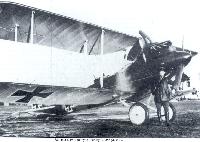 |
Сайт - Pilots-and-planes /WWW/
|
|
|
 |
J.Herris - Rumpler Aircraft of WWI /Centennial Perspective/ (11)
|
| Rumpler C.IV with early national insignia and painted camouflage is lined up with the rest of its unit.
|
 |
H.Cowin - Aviation Pioneers /Osprey/
|
| If the Rumpler C III had proven to be a disaster waiting to happen, its successor from the same stables was just the reverse. Powered by a 260hp Mercedes D IVa, the Rumpler C IV followed closely upon the C III, ensuring that the firm was in a position to continue producing two seaters almost without interruption during the spring of 1917. The C IV, with its top level speed of 109mph at sea level, combined with a superb high altitude capability of 21,000 feet saw the C IV providing stalwart service through to the cessation of hostilities.
|
 |
J.Herris - Rumpler Aircraft of WWI /Centennial Perspective/ (11)
|
"Румплеры" C-IV одной из разведывательных эскадр западного фронта
An early-production Rumpler C.IV is a fine backdrop for this group portrait; another rests in the background. The high-flying Rumplers were effective German reconnaissance aircraft as they were able to escape most attackers by taking advantage of the ceiling of 21,000ft (6,400m).
|
 |
J.Herris - Rumpler Aircraft of WWI /Centennial Perspective/ (11)
|
| Early-production Rumpler C.IV in factory finish.
|
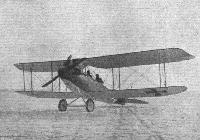 |
Журнал - Flight за 1917 г.
|
| Another view of the 260 h.p. C.IV-type Rumpler biplane. - The annexed illustration, appears to indicate an attempt by the Rumpler firm at better stream-lining, as a hemispherical nose-piece is fitted over the boss of the airscrew, and the sides of the front part of the body are rounded off to gradually carry the curve of the nose-piece into the flat sides of the rear portion of the fuselage. Also, judging by the illustration, it appears that the span is somewhat smaller than in the older type Rumpler biplanes.
|
 |
M.Dusing - Germania Flugzeugwerke and Its Aircraft /Centennial Perspective/ (41)
|
| 300th repaired Rumpler aircraft.
|
 |
M.Dusing - Germania Flugzeugwerke and Its Aircraft /Centennial Perspective/ (41)
|
| Another view of the 300th repaired Rumpler aircraft with Director Egwin Leiber at left and a Germania pilot at right. (Peter M Grosz collection/STDB)
|
 |
M.Dusing - Germania Flugzeugwerke and Its Aircraft /Centennial Perspective/ (41)
|
| Refurbished Rumpler C.IV aircraft in the "Starting Hall".
|
 |
M.Dusing - Germania Flugzeugwerke and Its Aircraft /Centennial Perspective/ (41)
|
| Hangar full of refurbished Rumpler aircraft.
|
 |
J.Herris - Rumpler Aircraft of WWI /Centennial Perspective/ (11)
|
| A nonchalant crew photographed with their Rumpler. The arrow marking on the side and top of the fuselage is the unit marking of Flieger-Abteilung 7.
|
 |
J.Herris - Rumpler Aircraft of WWI /Centennial Perspective/ (11)
|
| Maybach-engined Rumpler C.IV 1423/16 tactical number '4' of Flieger-Abteilung 7. Although having the same tactical number, this may be a different aircraft then that shown above; notice the arrow markings on the upper wings not on the airplane above. Of course, the upper wing arrows may have been added after repair. From this batch onward the type designation, in this case 'C.4', was added to the serial number to distinguish the sub-types of the family. Roman numerals were used after this batch.
|
 |
J.Herris - Rumpler Aircraft of WWI /Centennial Perspective/ (11)
|
| Crudely retouched postcard of Rumpler C.IV 8428/16 (w/n 2276) captured by the French. The aircraft was on display at the Place Jean Bart in Dunkerque. As evidenced by the white arrow unit marking this was a Fl. Abt. 7 aircraft. It was thoroughly studied by the French.
|
 |
J.Herris - Rumpler Aircraft of WWI /Centennial Perspective/ (11)
|
| Later production Rumpler C.IV 8476/16 in factory painted camouflage has the new nose contours without spinner. Eliminating the spinner reduced drag and added 10-15 km/h to the aircraft's speed.
|
 |
J.Herris - Rumpler Aircraft of WWI /Centennial Perspective/ (11)
|
| Rumpler C.IV 1454/17 of FA(A) 209 was brought down by Sous-Lt. Covin of SPA 31 on Oct. 24,1917; its crew was made PoW. Here it is seen after French markings were applied. A small, nonstandard pointed spinner is fitted to the propeller; the unit may have added this.
|
 |
J.Herris - Rumpler Aircraft of WWI /Centennial Perspective/ (11)
|
| Rumpler C.IV 7610/17 in American hands in 1918 as shown by the straight-sided Balkenkreuz, apparently after repairs. It had the Mercedes D.IVa engine typical of the C.IV.
|
 |
J.Herris - Rumpler Aircraft of WWI /Centennial Perspective/ (11)
|
| Rumpler C.VI 8254/17 has a flare rack for the observer and is covered with printed camouflage fabric.
|
 |
J.Herris - Rumpler Aircraft of WWI /Centennial Perspective/ (11)
|
| Rumpler Rubild 8322/17 in factory camouflage and wearing the straight-sided 1918 national insignia.
|
 |
J.Herris - LVG Aircraft of WWI. Volume 2: Types C.II-C.V /Centennial Perspective/ (35)
|
| LVG C.V 9437/17 (at right) and Rumpler C.IV C8424/16 Dalila are among the aircraft being repaired in this hangar. Two more LVG C.V aircraft are visible along with another aircraft, perhaps an LVG C.V, at left. The photo was taken at AFP 4.
|
 |
J.Herris - Rumpler Aircraft of WWI /Centennial Perspective/ (11)
|
| Rumpler C.IV 8424/16 Dalila of the first production batch undergoes maintenance.This early production C.IV is the subject of Steve Anderson's cover painting. LVG C.V aircraft are on both sides of Dalila.
|
 |
J.Herris - Rumpler Aircraft of WWI /Centennial Perspective/ (11)
|
| Rumpler C.IV 8485/17 of FA(A) 219 wears an interesting camouflage scheme. Like the earlier C.III from which the C.IV got its airframe, the C.IV was lightly designed for minimum weight to maximize climb and ceiling. The result was the airframe had to be locally strengthened a number of times based on operational experience.
|
 |
J.Herris - Rumpler Aircraft of WWI /Centennial Perspective/ (11)
|
| Colorfully-marked Rumpler in late insignia
|
 |
Журнал - Flight за 1918 г.
|
| THE C. IV-TYPE RUMPLER BIPLANE. - Three-quarter front view of the 260 h.p. Mercedes model.
|
 |
J.Herris - Rumpler Aircraft of WWI /Centennial Perspective/ (11)
|
| Is this a case of before and after? Rumpler C.IV tactical number '3' of Flieger-Abteilung 1 with crew on facing page above and after coming down behind Allied lines in other photos, although the first photo may be a different aircraft. Rumpler C.IV C.8500/16 with 260 hp Mercedes D.IVa was captured on 29 December 1917, brought down at Monchy by ground fire. Given the capture number G.117, it was closely examined and was the basis of the report in Jane's All the World's Aircraft. It is in the early factory finish plus the unit insignia of the arrows on the fuselage sides and top. The eyes painted on the nose are thought to be individual markings. Unfortunately, the photos were taken after the iron cross national insignia had been painted over with roundels.
|
 |
J.Herris - Rumpler Aircraft of WWI /Centennial Perspective/ (11)
|
|
|
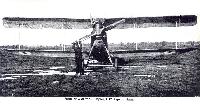 |
Сайт - Pilots-and-planes /WWW/
|
| Front view of the 2-Seater Rumpler.
|
 |
Сайт - Pilots-and-planes /WWW/
|
| Fig. 3. - The Rumpler biplane - C 4 type.
|
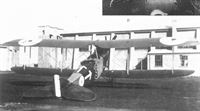 |
J.Herris - Rumpler Aircraft of WWI /Centennial Perspective/ (11)
|
|
|
 |
Сайт - Pilots-and-planes /WWW/
|
|
|
 |
Журнал - Flight за 1918 г.
|
| Rear view of the 2-Seater Rumpler.
|
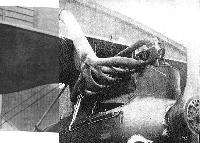 |
Журнал - Flight за 1918 г.
|
| The exhaust manifold and engine cowling of the 2-Seater Rumpler.
|
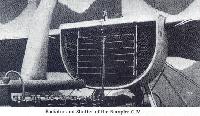 |
Сайт - Pilots-and-planes /WWW/
|
| Под верхним крылом самолета устанавливался радиатор в полукруглом туннеле с регулирующей заслонкой впереди.
|
 |
Журнал - Flight за 1918 г.
|
| Tail and Fin Bracing of the Rumpler. Note the saw-teeth on the low tail stay type to prevent mechanics from lifting the machine by this tube.View of the 2-Seater Rumpler tail.
|
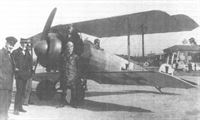 |
J.Herris, J.Leckscheid - Fokker Aircraft of WWI. Vol.3: Early Biplane Fighters /Centennial Perspective/ (53)
|
| The AGO company building seen in the background identifies this photo as being taken at Berlin Johannisthal. The photo gives a good impression of what was going on at Adlershof and Johannisthal in 1917 and 1918, a Rumpler C.IV and men working on a wing laying on the ground can be seen in the background.
|
 |
J.Herris - Rumpler Aircraft of WWI /Centennial Perspective/ (11)
|
| This late-production Rumpler had a wind-driven electrical generator to power the crew's electrically-heated flying suits.
|
 |
J.Herris - Rumpler Aircraft of WWI /Centennial Perspective/ (11)
|
| Rumpler C.IV of Flieger-Abteilung (A) 209 carries a wicker supply cannister. When dropped the canister descended by parachute. Flieger-Abteilung (A) 209 also used AEG N.I night bombers for this purpose.
|
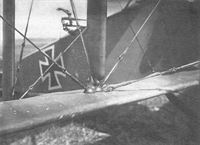 |
J.Herris - Rumpler Aircraft of WWI /Centennial Perspective/ (11)
|
| Close-up view of a Rumpler C.IV; the unusual straight-tube observer's gun mount is visible.
|
 |
J.Herris - Rumpler Aircraft of WWI /Centennial Perspective/ (11)
|
| This early-production Rumpler C.IV retains the straight bar observer's gun mount.
|
 |
J.Herris - Rumpler Aircraft of WWI /Centennial Perspective/ (11)
|
| The crew of this Rumpler C.IV appeal for kindness with their markings "Good People don't shoot". In case that appeal does not work the observer has a machine gun on an unusual straight mounting. One pilot told the author he chose to fly Rumplers instead of fighters because he "just didn't have the heart to dive down on an unsuspecting enemy and shoot him down."
|
 |
J.Herris - Rumpler Aircraft of WWI /Centennial Perspective/ (11)
|
| The crew of this Rumpler C.IV delivers Christmas dinner. This photo gives a better view of the unusual mounting for the observer's flexible gun.
|
 |
J.Herris - Rumpler Aircraft of WWI /Centennial Perspective/ (11)
|
| Another view of a Rumpler C.IV delivering packages to the front. Despite use of the unusual observer's gun mounting, which must have caused more drag than standard mountings, this appears to be a different aircraft, or at least a different occasion, than that above.
|
 |
J.Herris - Rumpler Aircraft of WWI /Centennial Perspective/ (11)
|
| Rumpler C.IV of Flieger-Abteilung 18; Lt. Heinz Lubarsch was the observer.
|
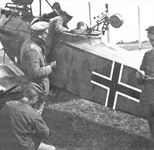 |
J.Herris - Rumpler Aircraft of WWI /Centennial Perspective/ (11)
|
| Printed lozenge fabric on a late-production Rumpler.
|
 |
J.Herris - Rumpler Aircraft of WWI /Centennial Perspective/ (11)
|
| The ground crew photographed with their Rumpler. The triangle marking on the fuselage side appears to be the unit marking of Flieger-Abteilung (A) 209, although the colors are reversed from their usual presentation.
|
 |
J.Herris - Rumpler Aircraft of WWI /Centennial Perspective/ (11)
|
| Both reconniassance units and fighter units had unit markings, but personal insignia were more common in fighter units. Here a Rumpler in early factory camouflage, with paint chipping off the fabric, proudly displays a lion personal marking. Details of the unit and crew are not known, but one wonders if this was a Bavarian lion.
|
 |
J.Herris - Rumpler Aircraft of WWI /Centennial Perspective/ (11)
|
| A mid-production (no spinner but wearing painted camouflage instead of fabric printed with the lozenge pattern) Rumpler seems to be the center of attention for this busy gathering. Crewmen in flight clothing indicate it is either ready for flight or has just returned.
|
 |
J.Herris - Rumpler Aircraft of WWI /Centennial Perspective/ (11)
|
| Confident flight crew photographed by their Rumpler.
|
 |
J.Herris - Rumpler Aircraft of WWI /Centennial Perspective/ (11)
|
|
|
 |
J.Herris - Rumpler Aircraft of WWI /Centennial Perspective/ (11)
|
| Rumplers flew long missions at extreme altitudes, and their crews were subjected to subzero cold in open cockpits, so heavily-insulated flying gear, often electrically heated, together with protective masks were needed to prevent frostbite. These scenes of crewmen preparing for flight illustrate some of their specialized flight equipment, including electrically-heated flight suits, gloves, and face masks.
|
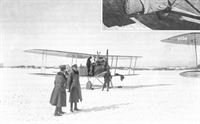 |
J.Herris - Rumpler Aircraft of WWI /Centennial Perspective/ (11)
|
| Rumpler C.IV on a snowy airfield at Minsk, Russia.
|
 |
J.Herris - Rumpler Aircraft of WWI /Centennial Perspective/ (11)
|
An interesting collection of two-seaters, typifying the equipment of 1917-18. In the foreground is a Rumpler C IV, the other aircraft being a Rumpler C VII, a Hannover CL IIIa and a D.F.W. C V.
Two Rumplers are lined up in this well-known photograph with a Hannover CL.II and DFW C.V in the background. Unusually, the early Rumpler nearest the camera, C.IV 8267/16, is covered with printed camouflage fabric. The second Rumpler, C.IV 6695/16, was sent back to "Lager West" from AFP 6 in April 1917 for strengthening of the rear fuselage.
|
 |
J.Herris - AEG Aircraft of WWI /Centennial Perspective/ (16)
|
| Two AEG N.I bombers are seen in in this photo of FA(A) 209. The aircraft on the far right in the row nearest the camera is a Rumpler C.IV; to its left in the row nearest the camera are two AEG N.I night bombers.
|
 |
J.Herris - AEG Aircraft of WWI /Centennial Perspective/ (16)
|
| This view of the inside of the Zeppelin hangar in Trier shows AEG J.II 353/18 tactical '7' with its wings still on. A USAS Salmson 2 A2 is at lower left with a Rumpler C.IV in the center, an LVG C.VI behind the AEG J.II, and Fokker D.VII fighters among the aircraft that can be identified.
|
 |
O.Thetford, P.Gray - German Aircraft of the First World War /Putnam/
|
| Pfalz C I
|
 |
J.Herris - Pfalz Aircraft of WWI /Centennial Perspective/ (5)
|
| Pfalz C.I, later redesignated Rumpler C.IV (Pfal), at the Pfalz factory.
|
 |
J.Herris - Pfalz Aircraft of WWI /Centennial Perspective/ (5)
|
| Pfalz C.I, later Rumpler C.IV (Pfal), at the Pfalz factory. Test pilot Gustav Bauer stands third from right.
|
 |
J.Herris - Pfalz Aircraft of WWI /Centennial Perspective/ (5)
|
| This Pfalz C.I, later redesignated Rumpler C.IV (Pfal), clearly shows the ailerons on all four wings and the actuating struts between the upper and lower ailerons that distinguished the Pfalz-built aircraft from the standard Rumpler C.IV.
|
 |
J.Herris - Rumpler Aircraft of WWI /Centennial Perspective/ (11)
|
| After the war Rumpler used both C.I and C.IV aircraft in a short-lived airline, Rumpler Luftverhehr (Rumpler Air Traffic). Here D72 shows its heritage of clean lines in March 1919. Its route of Berlin-Augsburg-Munich is painted on the fuselage.
|
 |
A.Jackson - British Civil Aircraft since 1919 vol.3 /Putnam/
|
| Slingsby Type 58 Rumpler С IV replica
|
 |
J.Herris - Rumpler Aircraft of WWI /Centennial Perspective/ (11)
|
| An experimental Rumpler C-type with a massive, 345 hp Austro-Daimler V-12 engine installed. Fitted with this powerful engine provided by Austria-Hungary, the airplane was delivered to the Austro-Hungarian Luftfahrtruppen and given serial number 00.01. It crashed and was not repaired. Unfortunately, there is no record of its performance with this powerful engine, but it may have been somewhat nose heavy.
|
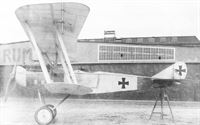 |
P.Grosz, G.Haddow, P.Shiemer - Austro-Hungarian Army Aircraft of World War One /Flying Machines/
|
| The Rumpler C.VII derivative (Type 6A11?) photographed upon completion at the Rumpler factory in Johannisthal in late February 1918. The undercarriage has been raised to provide clearance for the increased propeller diameter required by the 300 hp Daimler engine.
|
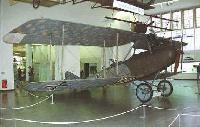 |
Сайт - Pilots-and-planes /WWW/
|
|
|
 |
C.Owers, J.Herris - Hannover Aircraft of WWI /Centennial Perspective/ (46)
|
| In the winter of 1918/1919, a large number of types of aircraft were used by Poland from the WWI German, Austro-Hungarian, and Russian air forces. These aircraft went to the Polish squadrons fighting in the Polish-Ukrainian war. In the photograph above a Rumpler C.IV is at left and a Hannover CL.II is at right. (collections of Lt. Col.T. Kopahski, author and J. Butkiewicz)
|
 |
C.Owers - Fokker Aircraft of WWI. Vol.7: Postwar /Centennial Perspective/ (67)
|
| Ploughshares - Civilian Fokker D.VII biplanes O-BILL and O-BEBE with Belgian Rumpler C types on a civil airfield. The Fokkers and at least one Rumpler are still in lozenge fabric. (via D Brackx)
|
 |
А.Александров, Г.Петров - Крылатые пленники России
|
| (КПР 63а)
|
 |
А.Александров, Г.Петров - Крылатые пленники России
|
| (КПР 63б)
|
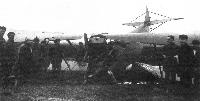 |
А.Александров, Г.Петров - Крылатые пленники России
|
| (КПР 63в)
|
 |
А.Александров, Г.Петров - Крылатые пленники России
|
| (КПР 63г)
|
 |
J.Herris - Rumpler Aircraft of WWI /Centennial Perspective/ (11)
|
| Control wheel in a Rumpler cockpit; early-production aircraft had a control stick for the pilot.
|
 |
J.Herris - Rumpler Aircraft of WWI /Centennial Perspective/ (11)
|
| Later production Rumpler C.IV 1449/17 has suffered a landing accident. It wears standard factory camouflage enhanced with red/ white/black (German national colors) markings on the fuselage, wheel covers, wing struts, and nose, making it much more colorful than most Rumplers.
|
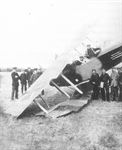 |
J.Herris - Rumpler Aircraft of WWI /Centennial Perspective/ (11)
|
| Early-production Rumpler C.IV after a bad landing. The aircraft has the typical factory painted camouflage finish for early production aircraft.
|
 |
J.Herris - Rumpler Aircraft of WWI /Centennial Perspective/ (11)
|
| Rumpler C.IV tactical number '4' of Flieger-Abteilung 7 after a rough landing.
|
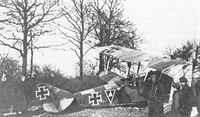 |
J.Herris - Rumpler Aircraft of WWI /Centennial Perspective/ (11)
|
| Rumpler C.IV x693/1x, probably 6693/16, of FA(A) 209, brought down behind French lines. When Rumpler C.IV aircraft were used for general two-seater duties at lower altitudes they were more vulnerable to fighters and anti-aircraft fire.
|
 |
J.Herris - Rumpler Aircraft of WWI /Centennial Perspective/ (11)
|
| Rumpler C.IV 7955/18 serving with FA304b after a bad landing.
|
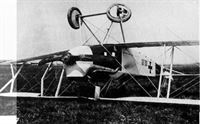 |
P.Grosz, G.Haddow, P.Shiemer - Austro-Hungarian Army Aircraft of World War One /Flying Machines/
|
A hard landing, probably during first flight trials at Aspern in late April 1918, put an end to further testing of the Rumpler C.VII 00.01.
Rumpler C.IV mit Daimler-Motor 350 PS, Flugzeugnummer 00.01
Rumpler C.IV с двигателем Daimler 350 л.с., номер самолета 00.01
|
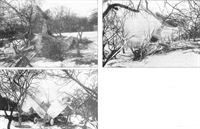 |
J.Herris - Rumpler Aircraft of WWI /Centennial Perspective/ (11)
|
| The unusual observer's gun mounting is visible on this crashed Rumpler, supporting its identification as an early production C.IV.
|
 |
J.Herris - Rumpler Aircraft of WWI /Centennial Perspective/ (11)
|
| Crash of Rumpler C.IV 8512/16. The Swastika is aft of the one on the C.VII.
|
 |
M.Dusing - Germania Flugzeugwerke and Its Aircraft /Centennial Perspective/ (41)
|
| Aircraft wrecks delivered for repair: Rumpler C.IV 8474/16, Rumpler C.I 6519/16, Rumpler C.IV 8280/16, and Albatros C.VII 1295/16.
|
 |
J.Herris - Rumpler Aircraft of WWI /Centennial Perspective/ (11)
|
| Steve Anderson's evocative painting of the famous Rumpler C.IV, the aircraft for which Rumpler is still known today. C.IV 8424/16 Dalila was from the first C.IV production batch. Only the highest-performance Allied fighters had any hope of intercepting a Rumpler C.IV if it was on a high-altitude reconnaissance mission. At high altitude the aerodynamic Rumpler C.IV was as fast as Allied fighters and had a good chance of besting them in combat.
|
 |
Журнал - Flight за 1918 г.
|
| THE 2-SEATER RUMPLER, C. 5 TYPE. - Figs. 1 to 18.
|
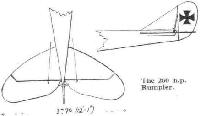 |
Журнал - Flight за 1917 г.
|
| The 260 h.p. Rumpler.
|
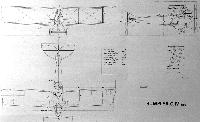 |
Jane's All The World Aircraft 1919 /Jane's/
|
| Rumpler C.IV type.
|
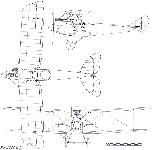 |
Сайт - Pilots-and-planes /WWW/
|
|
|
 |
J.Herris - Rumpler Aircraft of WWI /Centennial Perspective/ (11)
|
| Rumpler C.IV
|
 |
J.Herris - Rumpler Aircraft of WWI /Centennial Perspective/ (11)
|
| Rumpler C.IV
|
 |
J.Herris - Rumpler Aircraft of WWI /Centennial Perspective/ (11)
|
| Rumpler C.IV
|
 |
Журнал - Flight за 1918 г.
|
| THE C.IV-TYPE RUMPLER BIPLANE. - Plan, side and front elevations to s:ale.
|
 |
Журнал - Flight за 1918 г.
|
| THE 2-SEATER RUMPLER, C. 5 TYPE. - General arrangement to scale.
|
 |
В.Кондратьев - Самолеты первой мировой войны
|
| "Румплер" C-IV
|




















































































































